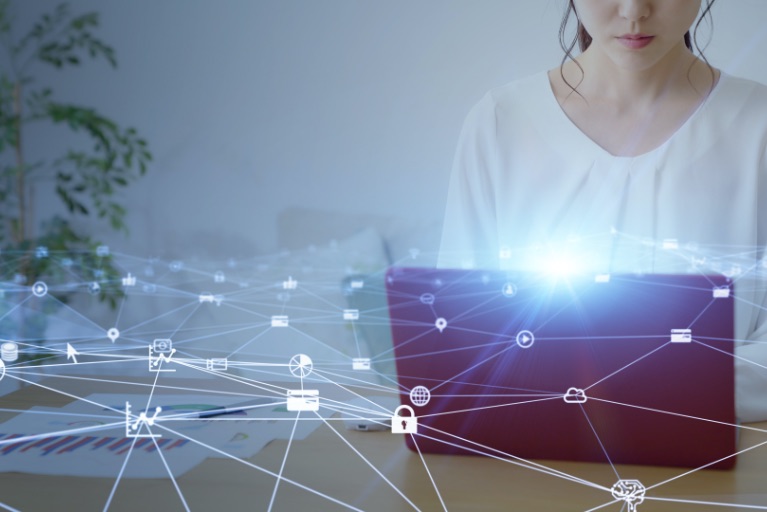In Florida, Illinois, and the rest of the United States, remote work has become widespread not just as a response to the COVID-19 pandemic, but also as a work arrangement with benefits outside the context of a pandemic. It gives employees the flexibility to work from any location, reducing costs and increasing job satisfaction.
But no matter how much you love the idea of forgoing office space leases to reduce expenses, you’re probably worried about giving employees remote access to company data. Home offices are not as well-protected as traditional offices, and a careless employee can easily leave your business exposed to data security risks.
Executing a successful remote work program requires specialized security measures and strategies.
Here are five best practices to ensure remote work security.
1. Fortify home Wi-Fi networks and avoid public ones
Home Wi-Fi networks are more susceptible to attacks because, unlike corporate networks, they’re not protected by enterprise-grade firewalls and intrusion prevention systems. But that doesn’t mean there’s no way to protect them.
Workers should change the default name and password of their home network so hackers can’t easily access their systems. It’s also imperative to secure home networks with the latest firewalls, router firmware updates, and WPA2 encryption protocols. These make it much more difficult for hackers to infiltrate or steal data being transmitted from your employees’ wireless networks.
Beyond securing their home networks, employees must avoid public Wi-Fi networks like the ones found in local cafes and airports. This is large because hackers may be monitoring these networks, looking to intercept sensitive information. Regardless of whether employees are connecting to company systems at home or in public, make sure they use a company-approved virtual private network (VPN). VPNs create a secure connection to the internet, encrypting data, and hiding online activities from prying eyes.
2. Implement zero trust security
A zero trust approach to cybersecurity means anyone who attempts to access company apps and data should not be trusted until you’ve fully verified their identity and access privileges.
To meet these conditions, you must first enable multifactor authentication — a security framework that requests for multiple credentials to verify user identities. Credentials can be something only an authorized user knows, like a password; something that’s physically unique to them, such as fingerprints; or something they have, like a one-time passcode sent to their device. When two or more of these authentication factors are combined, accounts are exponentially more difficult to hack. Even if cybercriminals crack passwords, they still can’t breach company accounts unless they have access to the other authentication factors.
Secondly, users should have only the minimum access privileges required to perform their jobs. Management platforms like Windows Server Solutions allow you to set access restrictions based on job roles, data, and applications. This way, someone from production isn’t able to access accounting software and records.
3. Protect employee devices
Giving employees free reign to use their own devices to access company systems can be risky because there’s no guarantee that those devices are being used safely. For all you know, these devices could be riddled with system vulnerabilities that give hackers easy access to classified data.
The most effective way to mitigate these risks is to register employee devices in endpoint management software like Microsoft Intune. This allows you to monitor employee devices and deny access to potentially vulnerable ones. Intune is programmed to block devices that are jailbroken, run outdated software, or are connected to unsecured networks from accessing company data. Intune even has built-in remediation features that enable you to deploy the latest patches to company-registered devices and prompt staff to install antivirus software.
Physical safety is another aspect of protecting employee devices. Employees must refrain from using suspicious USB drives and never leave their work devices unattended, especially in public places. If devices are lost or stolen, you’ll need to remotely wipe their contents with your endpoint management software.
4. Watch out for social engineering scams
Social engineering, in the context of cybersecurity, involves manipulating people to perform certain actions. Phishing and it’s more recent variation, smishing, use deceptive emails and text messages to spread malware and trick victims into disclosing sensitive information.
These scams typically appear to come from legitimate companies and entities to establish trust with a victim and instill a sense of urgency. For instance, a common phishing scam is when cybercriminals masquerade as IT technicians, claiming that there’s a problem with the target’s computer, and request for billing information to fix the issue.
Phishing activities are also more frequent during times of crisis. In fact, there have already been instances of phishing campaigns capitalizing on the COVID-19 situation by posing as government agencies and CDC officials.
To avoid phishing scams, your remote staff must regularly undergo security training. You can conduct training sessions using video chat and webinar tools, and even utilize phishing simulation tools to test your staff’s security awareness. Regardless of how you train employees, make sure to drill in the following lessons:
- Never click on links and attachments from unverified sources.
- Be critical of unsolicited emails and check for spoofed email addresses (e.g., @amazoon.com instead of @amazon.com).
- Review emails for grammatical and typographical errors. Most phishing emails are translated from other languages and aren’t proofread.
- Watch out for offers that seem too good to be true, like a free iPhone in exchange for answering a personal survey.
- Be careful of fake CEO and executive messages asking for unusual wire transfers.
- Don’t provide personal information over SMS. When in doubt, check with the company directly via their official website or phone number.
5. Secure communication channels
Communication tools are integral to remote workers, but they can also give hackers an opportunity to infiltrate enterprise networks and steal company data. That’s why it’s important to secure any mode of communication your company uses.
For starters, thoroughly vet business messaging apps before installing them. There are hundreds of apps that claim to be “secure,” but the only way to know that is by analyzing their security features and reading user reviews. Microsoft Teams and Slack are among the most reliable options because of their advanced encryption and data loss prevention capabilities.
If remote workers are using Voice over Internet Protocol phone systems, encrypt calls with a reliable VPN to defend against eavesdropping. The same goes for email communications. Anyone whose work involves sending sensitive information via email should use enterprise-grade email encryption systems.
Finally, teach employees never to send sensitive information over communication channels unless they absolutely have to. After all, there’s no reason to expose your business to unnecessary risks.
Managing remote workers can be difficult to wrap your head around, but you don’t have to do it all alone. Dynamics Solutions Group is a managed IT services provider that offers robust cybersecurity services and solutions that allow you to establish a risk-free remote work environment. Get in touch with us today to find out how to make your remote work program a success.





